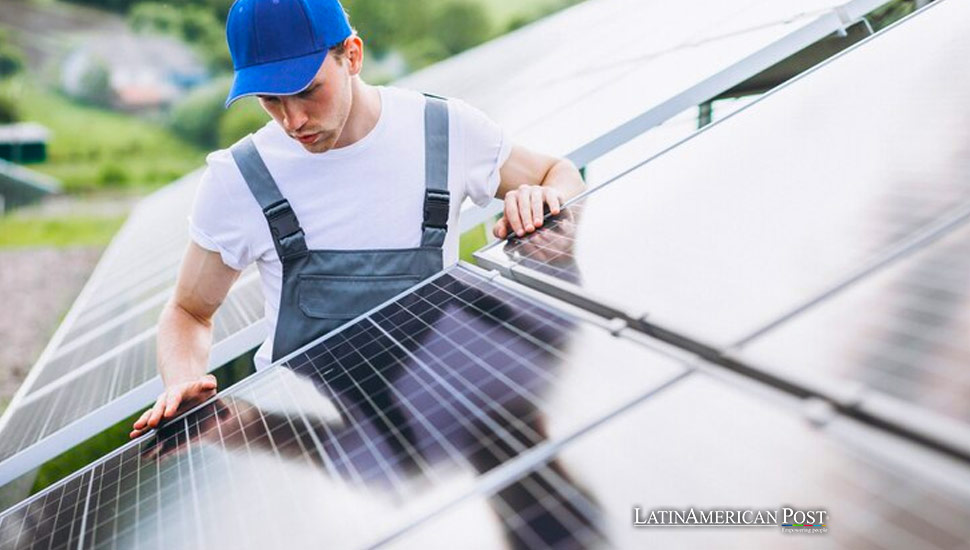Brazil Shines with 2 Million Solar-Powered Homes

Brazil hits a remarkable milestone with two million residences now harnessing the sun’s power, generating 13 gigawatts from rooftop solar panels, signaling a significant shift towards renewable energy in Latin America’s largest economy.
Brazil, a vibrant and diverse powerhouse in Latin America, has reached a new pinnacle in its journey toward sustainable energy. The country now boasts two million residences equipped with solar panels, producing a combined energy capacity of 13 gigawatts (GW). This achievement, reported by the Brazilian Association of Photovoltaic Solar Energy (Absolar), underscores a significant transformation in how Brazilians consume and think about energy.
This surge in solar energy adoption across Brazilian rooftops reflects environmental awareness and economic strategy. With an investment of 70.3 billion reais (about $13.78 billion), installing residential solar energy systems represents a pivotal shift towards decentralizing energy production and enhancing energy security for millions.
The states leading this solar revolution include São Paulo, with 385,300 homes powered by the sun, and Rio Grande do Sul and Minas Gerais. This widespread adoption indicates a broader trend across Brazil, where renewable energy is becoming increasingly mainstream.
Technological Advances in Photovoltaics
The technology behind these achievements, photovoltaic (PV) solar panels, has undergone significant advancements. Modern solar panels are more efficient, durable, and cost-effective than ever before. Their average efficiency has increased, allowing them to convert more sunlight into electricity. This improvement is crucial for maximizing energy production, especially in urban settings where space can be limited.
Furthermore, the cost of solar panels has plummeted by 50% in the last year alone, making this technology more accessible to the average consumer. This price drop is attributed to advancements in manufacturing processes and global supply chain enhancements, which have made the components less expensive and more readily available.
Comparison with Newer Planes
The progress in solar panel technology can be likened to advancements in other high-tech sectors, such as aerospace. Much like the latest generation of airplanes, which feature enhanced fuel efficiency and reduced emissions, modern solar panels are designed to maximize output while minimizing environmental impact. Both technologies reflect a move towards more sustainable practices, though they operate in vastly different industries.
Solar Energy in Latin America
Brazil’s commitment to expanding its solar capacity is part of a more significant trend in Latin America. Countries across the region are turning to renewable sources as part of their energy matrix. Nations like Chile, Mexico, and Argentina have also invested significantly in solar power, driven by abundant sunlight and a growing recognition of renewable energy’s economic benefits.
These countries, along with Brazil, are not only looking to reduce their greenhouse gas emissions but are also aiming to curb dependence on imported fossil fuels. The shift to renewables is a strategic move to enhance national energy security and promote long-term sustainability.
Environmental and Economic Impacts
Absolar’s report highlights more than just solar energy’s technological and economic aspects. The environmental impact is a beacon of hope, with the solar capacity installed in Brazil helping to prevent the emission of over 50.1 million tons of carbon dioxide (CO2) in recent years. This significant contribution to reducing the carbon footprint is a testament to the power of renewable energy in combating climate change, a challenge that Brazil and the world are actively addressing.
The solar energy sector in Brazil not only alleviates pressure on the country’s power grid but also contributes significantly to economic prosperity. It has created numerous jobs in the manufacturing, installation, and maintenance of solar systems, fostering innovation and entrepreneurship within the renewable energy sector. This economic impact highlights the potential for job creation and economic growth in other countries considering a transition to renewable energy.
The Future of Solar in Brazil
Looking ahead, Brazil shows no signs of slowing down its solar energy expansion. With 41 GW of combined capacity from private residential systems and large-scale solar parks, the country is on track to increase the share of solar energy in its overall energy matrix, currently at 17.4%.
This proactive approach towards a greener future sets a benchmark for other nations in the region, demonstrating the viability and benefits of embracing renewable energy. As you, the reader, continue to support and advocate for sustainable energy, the growth of solar power in Brazil becomes a shared achievement, supporting the global transition towards sustainable energy and reinforcing the country’s role as a leader in renewable energy in Latin America.
Also read: Brazil Battles Bird Flu as Seal and Sea Lion Deaths Surge
As Brazil continues to harness the sun’s power, it lights the way for a sustainable future, proving that with suitable investments and technologies, transitioning to a renewable energy-powered society is possible and beneficial for economic growth, environmental sustainability, and energy independence.





